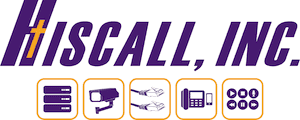With warm weather quickly approaching, it can be easy to forget the threat of storms, hurricanes, tornados and sweltering heat waves. All these threats come with the warm weather seasons. Check out the tips below provided by EATON, our partner in leading UPS Battery Backup Solutions.
Keep in mind that during the warm weather months …
- Weather conditions can create a wrath of threats. From heat waves to hurricanes, tornados to massive thunderstorms, there will be no shortage of menaces waiting to wreak havoc on your critical systems between now and Labor Day.
- The demand on the power grid doubles. Peak demand ─ the moment when air conditioners, equipment and appliances collectively suck up the most electricity ─ often occurs during heat waves. Regulators across the country historically warn consumers that there may be insufficient natural gas to keep electricity powered during sweltering heat waves.
- The added strain causes components to run hotter and wear out faster. Heat is bad for electronics, and high temperatures decrease the expected lifetime of computer parts, even if they are not actually overheating.
Despite the potential perils of warm weather, there are steps you can take to prevent your business from getting burned.
- Checkup on your UPS. Your uninterruptible power system is the first line of defense against the many hazards of the season, so make sure it’s in optimal health. During a preventive maintenance, inspect your system, test the batteries, and examine key components such as fans, capacitors and internal connections. If you have a generator, test that regularly, as well.
- Review the disaster recovery plan. Every change that has taken place within your organization since you first compiled your disaster recovery strategy — from adjustments in employees to new hardware and software implementations — makes your plan that much less effective. Be sure to update it on a regular basis.
- Site access: Variety is key. When selecting a spot for your data center, it’s wise to consider the site’s ability to withstand severe weather and disasters, as opposed to simply choosing the facility with the lowest cost. Avoid a single point-of-failure by maintaining multiple active sites in diverse locations (preparing for a local or regional disaster). Organizations that cannot afford downtime should not store data in only one location — or even in two locations susceptible to the same disaster. Also, keep in mind, room selection for your IT equipment. Seek higher (centralized) ground if possible to avoid flood damage. Variety is key, and when the time strikes, you will be happy all your eggs aren’t in just one basement-level basket.
- Always be prepared. Never lose sight of the fact that power problems are equal-opportunity threats ─ in addition to seasonal weather, downtime results from equipment failures, human error, copper thieves, and even obscure hazards such as drones, curious squirrels and wayward snakes. Anything that disrupts power has the potential to bring your business to a halt. Make sure you have a comprehensive power protection solution in place to keep operations flowing in the event of unforeseen circumstances.
- Communicate with customers. Customers will be more forgiving of downtime if you communicate with them, especially in the face of extreme weather. It’s similar to when school or business closings happen for you, as long as you get fair warning, it’s normally something you can plan around. While 100% uptime is expected on a daily basis, the human nature is to forgive especially with businesses that are transparent.
By partnering with EATON, Hiscall, Inc. customers enjoy a level of confidence that can come only from partnering with a single-point-of-contact for your communication needs. For more than 20 years, companies throughout the United States have depended on the expertise and service of Hiscall, Inc. We know that EATON is dedicated to ensuring that reliable, efficient and safe power is available when it’s needed most.
Article adapted from: The Plug E-Newsletter | Eaton.com



